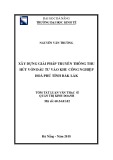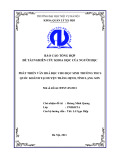
RESEARC H Open Access
Sequencing and analysis of an Irish human
genome
Pin Tong
1†
, James GD Prendergast
2†
, Amanda J Lohan
1
, Susan M Farrington
2,3
, Simon Cronin
4
, Nial Friel
5
,
Dan G Bradley
6
, Orla Hardiman
7
, Alex Evans
8
, James F Wilson
9
, Brendan Loftus
1*
Abstract
Background: Recent studies generating complete human sequences from Asian, African and European subgroups
have revealed population-specific variation and disease susceptibility loci. Here, choosing a DNA sample from a
population of interest due to its relative geographical isolation and genetic impact on further populations, we
extend the above studies through the generation of 11-fold coverage of the first Irish human genome sequence.
Results: Using sequence data from a branch of the European ancestral tree as yet unsequenced, we identify
variants that may be specific to this population. Through comparisons with HapMap and previous genetic
association studies, we identified novel disease-associated variants, including a novel nonsense variant putatively
associated with inflammatory bowel disease. We describe a novel method for improving SNP calling accuracy at
low genome coverage using haplotype information. This analysis has implications for future re-sequencing studies
and validates the imputation of Irish haplotypes using data from the current Human Genome Diversity Cell Line
Panel (HGDP-CEPH). Finally, we identify gene duplication events as constituting significant targets of recent positive
selection in the human lineage.
Conclusions: Our findings show that there remains utility in generating whole genome sequences to illustrate
both general principles and reveal specific instances of human biology. With increasing access to low cost
sequencing we would predict that even armed with the resources of a small research group a number of similar
initiatives geared towards answering specific biological questions will emerge.
Background
Publication of the first human genome sequence her-
alded a landmark in human biology [1]. By mapping out
the entire genetic blueprint of a human, and as the cul-
mination of a decade long effort by a variety of centers
and laboratories from around the world, it represented a
significant technical as well as scientific achievement.
However, prior the publication, much researcher interest
had shifted towards a ‘post-genome’era in which the
focus would move from the sequencing of genomes to
interpreting the primary findings. The genome sequence
has indeed prompted a variety of large scale post-gen-
ome efforts, including the encyclopedia of DNA ele-
ments (ENCODE) project [2], which has pointed
towards increased complexity at the levels of the
genome and transcriptome. Analysis of this complexity
is increasingly being facilitated by a proliferation of
sequence-based methods that will allow high resolution
measurements of both and the activities of proteins that
either transiently or permanently associate with them
[3,4].
However, the advent of second and third generation
sequencing technologies means that the landmark of
sequencing an entire human genome for $1,000 is
within reach, and indeed may soon be surpassed [5].
The two versions of the human genome published in
2001, while both seminal achievements, were mosaic
renderings of a number of individual genomes. Never-
theless, it has been clear for some time that sequen-
cing additional representative genomes would be
needed for a more complete understanding of genomic
variation and its relationship to human biology. The
structure and sequence of the genome across human
populations is highly variable, and generation of entire
* Correspondence: brendan.loftus@ucd.ie
†Contributed equally
1
Conway Institute, University College Dublin, Belfield, Dublin 4, Ireland
Full list of author information is available at the end of the article
Tong et al.Genome Biology 2010, 11:R91
http://genomebiology.com/2010/11/9/R91
© 2010 Tong et al.; licensee BioMed Central Ltd. This is an open access article distributed under the terms of the Creative Commons
Attribution License (http://creativecommons.org/licenses/by/2.0), which permits unrestricted use, distribution, and reproduction in
any medium, provided the original work is properly cited.

genome sequences from a number of individuals from
a variety of geographical backgrounds will be required
for a comprehensive assessment of genetic variation.
SNPs as well as insertions/deletions (indels) and copy
number variants all contribute to the extensive pheno-
typic diversity among humans and have been shown to
associate with disease susceptibility [6]. Consequently,
several recent studies have undertaken to generate
whole genome sequences from a variety of normal and
patient populations [7]. Similarly, whole genome
sequences have recently been generated from diverse
human populations, and studies of genetic diversity at
the population level have unveiled some interesting
findings [8]. These data look to be dramatically
extended with releases of data from the 1000 Genomes
project [9]. The 1000 Genomes project aims to achieve
a nearly complete catalog of common human genetic
variants (minor allele frequencies > 1%) by generating
high-qualitysequencedatafor>85%ofthegenome
for 10 sets of 100 individuals, chosen to represent
broad geographic regions from across the globe. Repre-
sentation of Europe will come from European Ameri-
can samples from Utah and Italian, Spanish, British
and Finnish samples.
In a recent paper entitled ‘Genes mirror geography
within Europe’[10], the authors suggest that a geogra-
phical map of Europe naturally arises as a two-dimen-
sional summary of genetic variation within Europe and
state that when mapping disease phenotypes spurious
associations can arise if genetic structure is not prop-
erly accounted for. In this regard Ireland represents an
interesting case due to its position, both geographically
and genetically, at the western periphery of Europe. Its
population has also made disproportionate ancestral
contributions to other regions, particularly North
America and Australia. Ireland also displays a maximal
or near maximal frequency of alleles that cause or pre-
dispose to a number of important diseases, including
cystic fibrosis, hemochromatosis and phenylketonuria
[11]. This unique genetic heritage has long been of
interest to biomedical researchers and this, in conjunc-
tion with the absence of an Irish representative in the
1000 Genomes project, prompted the current study to
generate a whole genome sequence from an Irish indi-
vidual. The resulting sequence should contain rare
structural and sequence variants potentially specific to
the Irish population or underlying the missing herit-
ability of chronic diseases not accounted for by the
common susceptibility markers discovered to date [12].
In conjunction with the small but increasing number
of other complete human genome sequences, we
hoped to address a number of other broader questions,
such as identifying key targets of recent positive selec-
tion in the human lineage.
Results and discussion
Data generated
The genomic DNA used in this study was obtained from
a healthy, anonymous male of self-reported Irish Cauca-
sian ethnicity of at least three generations, who has been
genotyped and included in previous association and
population structure studies [13-15]. These studies have
shown this individual to be a suitable genetic represen-
tative of the Irish population (Additional file 1).
Four single-end and five paired-end DNA libraries
were generated and sequenced using a GAII Illumina
Genome Analyzer. The read lengths of the single-end
libraries were 36, 42, 45 and 100 bp and those of the
paired end were 36, 40, 76, and 80 bp, with the span
sizes of the paired-end libraries ranging from 300 to 550
bp (± 35 bp). In total, 32.9 gigabases of sequence were
generated (Table 1). Ninety-one percent of the reads
mapped to a unique position in the reference genome
(build 36.1) and in total 99.3% of the bases in the refer-
ence genome were covered by at least one read, result-
ing in an average 10.6-fold coverage of the genome.
SNP discovery and novel disease-associated variants
SNP discovery
Comparison with the reference genome identified
3,125,825 SNPs in the Irish individual, of which 87%
were found to match variants in dbSNP130 (2,486,906
as validated and 240,791 as non-validated; Figure 1).
The proportion of observed homozygotes and heterozy-
gotes was 42.1% and 57.9%, respectively, matching that
observed in previous studies [16]. Of those SNPs identi-
fied in coding regions of genes, 9,781 were synonymous,
10,201 were non-synonymous and 107 were nonsense.
Of the remainder, 24,238 were located in untranslated
regions, 1,083,616 were intronic and the remaining
1,979,180 were intergenic (Table 2). In order to validate
our SNP calling approach (see Materials and methods)
we compared genotype calls from the sequencing data
to those obtained using a 550 k Illumina bead array. Of
those SNPs successfully genotyped on the array, 98%
were in agreement with those derived from the sequen-
cing data with a false positive rate estimated at 0.9%,
validating the quality and reproducibility of the SNPs
called.
Disease-associated variants
Various disease-associated SNPs were detected in the
sequence, but they are likely to be of restricted wide-
spread value in themselves. However, a large proportion
of SNPs in the Human Gene Mutation Database
(HGMD) [17], genome-wide association studies
(GWAS) [18] and the Online Mendelian Inheritance in
Man (OMIM) database [19] are risk markers, not
directly causative of the associated disease but rather in
linkage disequilibrium (LD) with generally unknown
Tong et al.Genome Biology 2010, 11:R91
http://genomebiology.com/2010/11/9/R91
Page 2 of 14

SNPs that are. Therefore, in order to interrogate our
newly identified SNPs for potential causative risk factors,
we looked for those that appeared to be in LD with
already known disease-associated (rather than disease-
causing) variants. We identified 23,176 novel SNPs in
close proximity (< 250 kb) to a known HGMD or gen-
ome-wide association study disease-associated SNP and
where both were flanked by at least one pair of HapMap
[20] CEU markers known to be in high LD. As the
annotation of the precise risk allele and strand of SNPs
in these databases is often incomplete, we focused on
those positions, heterozygous in our individual, that are
associated with a disease or syndrome. Of the 7,682 of
these novel SNPs that were in putative LD of a HGMD
or genome-wide association study disease-associated
SNP heterozygous in our individual, 31 were non-synon-
ymous, 14 were at splice sites (1 annotated as essential)
and 1 led to the creation of a stop codon (Table S1 in
Additional file 2).
This nonsense SNP is located in the macrophage-sti-
mulating immune gene MST1, 280 bp 5′of a non-
synonymous coding variant marker (rs3197999) that has
been shown in several cohorts to be strongly associated
with inflammatory bowel disease and primary sclerosing
cholangitis [21-23]. Our individual was heterozygous at
both positions (confirmed via resequencing; Additional
files3and4)andover30pairsofHapMapmarkersin
high LD flank the two SNPs. The role of MST1 in the
immune system makes it a strong candidate for being
the gene in this region conferring inflammatory bowel
disease risk, and it had previously been proposed that
rs3197999 could itself be causative due to its potential
impact on the interaction between the MST1 protein
product and its receptor [22].
Importantly, the newly identified SNP 5′of rs3197999′
s position in the gene implies that the entire region 3′
Table 1 Read information
Data type Library number Number of reads Number of mapped reads Total bases (Gb) Mapped base (Gb) Effective depth
Single-end read 4 155,704,190 142,333,466 9.7 9.1 3.2
Paired-end read 5 324,936,690 297,787,256 23.2 21.2 7.4
Total 9 480,640,880 440,120,722 32.9 30.3 10.6
Figure 1 Comparison of detected SNPs and indels to
dbSNP130. The dbSNP alleles were separated into validated and
non-validated, and the detected variations that were not present in
dbSNP were classified as novel.
Table 2 Types of SNPs found
Consequence Number of SNPs % of SNPs
Essential_splice_site 135 0.0043
Stop_gained 107 0.0034
Stop_lost 23 0.0007
Non_synonymous_coding 10,201 0.3263
Splice_site 2,002 0.0640
Synonymous_coding 9,781 0.3129
Within_mature_mirna 30 0.0010
Within_non_coding_gene 16,512 0.5282
5prime_utr 4,599 0.1471
3prime_utr 19,639 0.6283
Intronic 1,083,616 34.6666
Other 1,979,180 63.3170
Tong et al.Genome Biology 2010, 11:R91
http://genomebiology.com/2010/11/9/R91
Page 3 of 14

of this novel SNP would be lost from the protein,
including the amino acid affected by rs3197999 (Figure
2). Therefore, although further investigation is required,
there remains a possibility that this previously unidenti-
fied nonsense SNP is either conferring disease risk to
inflammatory bowel disease marked by rs3197999, or if
rs3197999 itself confers disease as previously hypothe-
sized[22],thisnovelSNPisconferringnovelriskvia
the truncation of the key region of the MST1 protein.
Using the SIFT program [24], we investigated whether
those novel non-synonymous SNPs in putative LD with
risk markers were enriched with SNPs predicted to be
deleterious (that is, that affect fitness), and we indeed
found an enrichment of deleterious SNPs as one would
expect if an elevated number were conferring risk to the
relevant disease. Of all 7,993 non-synonymous allele
changes identified in our individual for which SIFT pre-
dictions could be successfully made, 26% were predicted
to be deleterious. However, of those novel variants in
putative LD with a disease SNP heterozygous in our
individual, 56% (14 out of 25) were predicted to be
harmful by SIFT (chi-square P=6.8×10
-4
, novel non-
synonymous SNPs in putative LD with risk allele versus
all non-synonymous SNPs identified). This suggests that
this subset of previously unidentified non-synonymous
SNPs in putative LD with disease markers is indeed sub-
stantially enriched for alleles with deleterious
consequences.
Figure 2 The linkage disequilibrium structure in the immediate region of the MST1 gene. Red boxes indicate SNPs in high LD. rs3197999,
which has previously been associated with inflammatory bowel disease, and our novel nonsense SNP are highlighted in blue.
Tong et al.Genome Biology 2010, 11:R91
http://genomebiology.com/2010/11/9/R91
Page 4 of 14

Indels
Indels are useful in mapping population structure, and
measurement of their frequency will help determine
which indels will ultimately represent markers of predo-
minately Irish ancestry. We identified 195,798 short
indels ranging in size from 29-bp deletions to 20-bp
insertions (see Materials and methods). Of these, 49.3%
were already present in dbSNP130. Indels in coding
regions will often have more dramatic impacts on pro-
tein translation than SNPs, and accordingly be selected
against, and unsurprisingly only a small proportion of
the total number of short indels identified were found
to map to coding sequence regions. Of the 190 novel
coding sequence indels identified (Table S2 Additional
file2),only2wereatpositionsinputativeLDwitha
heterozygous disease-associated SNP, of which neither
led to a frameshift (one caused an amino acid deletion
and one an amino acid insertion; Table S1 in Additional
file 2).
Population genetics
The DNA sample from which the genome sequence was
derived has previously been used in an analysis of the
genetic structure of 2,099 individuals from various
Northern European countries and was shown to be
representative of the Irish samples. The sample was also
demonstrated to be genetically distinct from the core
groupofindividualsgenotypedfromneighboringBrit-
ain, and the data are likely, therefore, to complement
the upcoming 1000 Genomes data derived from British
heritage samples (including CEU; Additional file 1).
Non-parametric population structure analysis [25] was
carried out to determine the positioning of our Irish
individual relative to other sequenced genomes and the
CEU HapMap dataset. As can be seen in Figure 3, as
expected, the African and Asian individuals form clear
subpopulations in this analysis. The European samples
form three further subpopulations in this analysis, with
the Irish individual falling between Watson and Venter
and the CEU subgroup (of which individual NA07022
has been sequenced [26]). Therefore, the Irish genome
inhabits a hitherto unsampled region in European
whole-genome variation, providing a valuable resource
for future phylogenetic and population genetic studies.
Y chromosome haplotype analysis highlighted that our
individual belonged to the common Irish and British
S145+ subgroup (JFW, unpublished data) of the most
common European group R1b [27]. Indeed, S145
reaches its maximum global frequency in Ireland, where
it accounts for > 60% of all chromosomes (JFW, unpub-
lished data). None of the five markers defining known
subgroups of R1b-S145 could be found in our indivi-
dual, indicating he potentially belongs to an as yet
undefined branch of the S145 group. A subset of the
(> 2,141) newly discovered Y chromosome markers
found in this individual is therefore likely to be useful in
further defining EuropeanandIrishYchromosome
lineages.
Mapping of reads to the mitochondrial DNA
(mtDNA) associated with UCSC reference build 36
revealed 48 differences, which by comparison to the
revised Cambridge Reference Sequence [28] and the
PhyloTree website [29] revealed the subject to belong to
mtDNA haplogroup J2a1a (coding region transitions
including nucleotide positions 7789, 13722, 14133). The
rather high number of differences is explained by the
fact that the reference sequence belongs to the African
haplogroup L3e2b1a (for example, differences at nucleo-
tide positions 2483, 9377, 14905). Haplogroup J2a (for-
merly known as J1a) is only found at a frequency of
approximately 0.3% in Ireland [30] but is ten times
more common in Central Europe [31].
The distribution of this group has in the past been
correlated with the spread of the Linearbandkeramik
farming culture in the Neolithic [31], and maximum
likelihood estimates of the age of J2a1 using complete
mtDNA sequences give a point estimate of 7,700 years
ago [32]; in good agreement with this thesis, sampled
ancient mtDNA sequences from Neolithic sites in Cen-
tral Europe predominantly belong to the N1a group
[33].
SNP imputation
The Irish population is of interest to biomedical
researchers because of its isolated geography, ancestral
impact on further populations and the high prevalence
of a number of diseases, including cystic fibrosis, hemo-
chromatosis and phenyketonuria [11]. Consequently,
Figure 3 Multidimensional scaling plot illustrating the Irish
individual’s relationship to the CEU HapMap individuals and
other previously sequenced genomes.
Tong et al.Genome Biology 2010, 11:R91
http://genomebiology.com/2010/11/9/R91
Page 5 of 14




![PET/CT trong ung thư phổi: Báo cáo [Năm]](https://cdn.tailieu.vn/images/document/thumbnail/2024/20240705/sanhobien01/135x160/8121720150427.jpg)











![Báo cáo seminar chuyên ngành Công nghệ hóa học và thực phẩm [Mới nhất]](https://cdn.tailieu.vn/images/document/thumbnail/2025/20250711/hienkelvinzoi@gmail.com/135x160/47051752458701.jpg)









